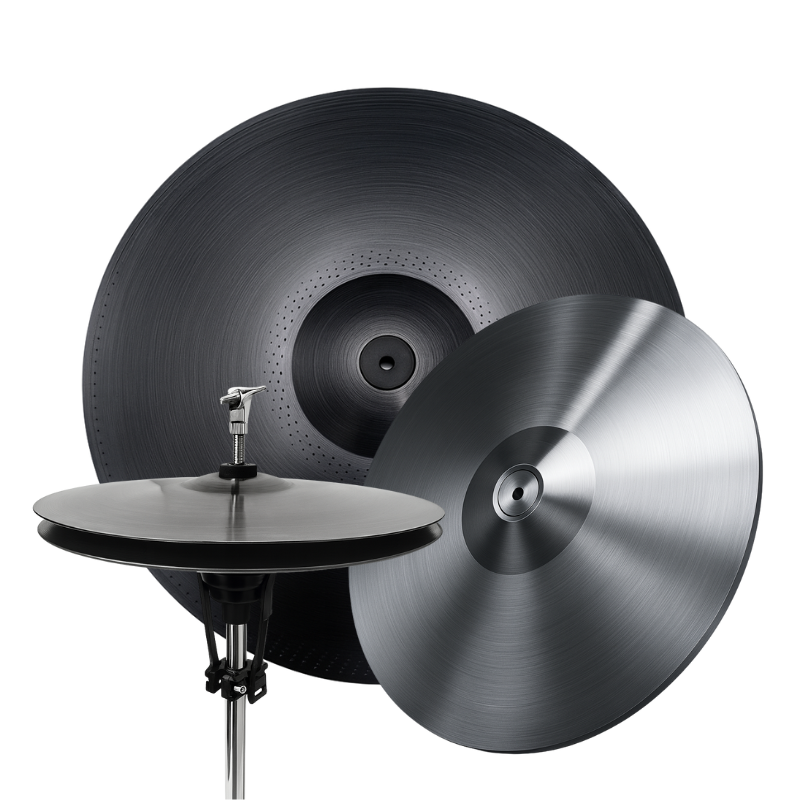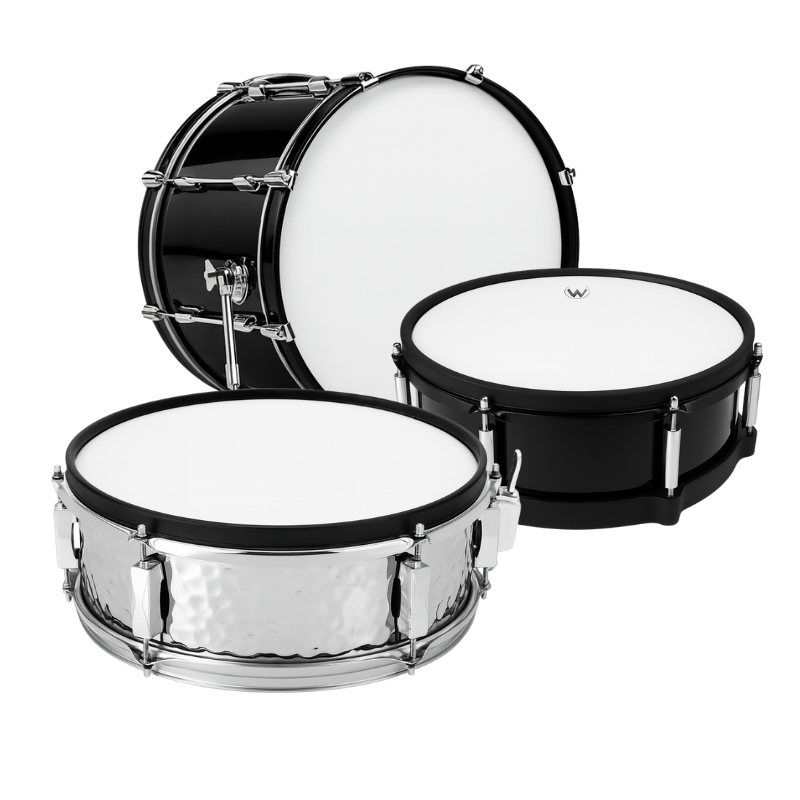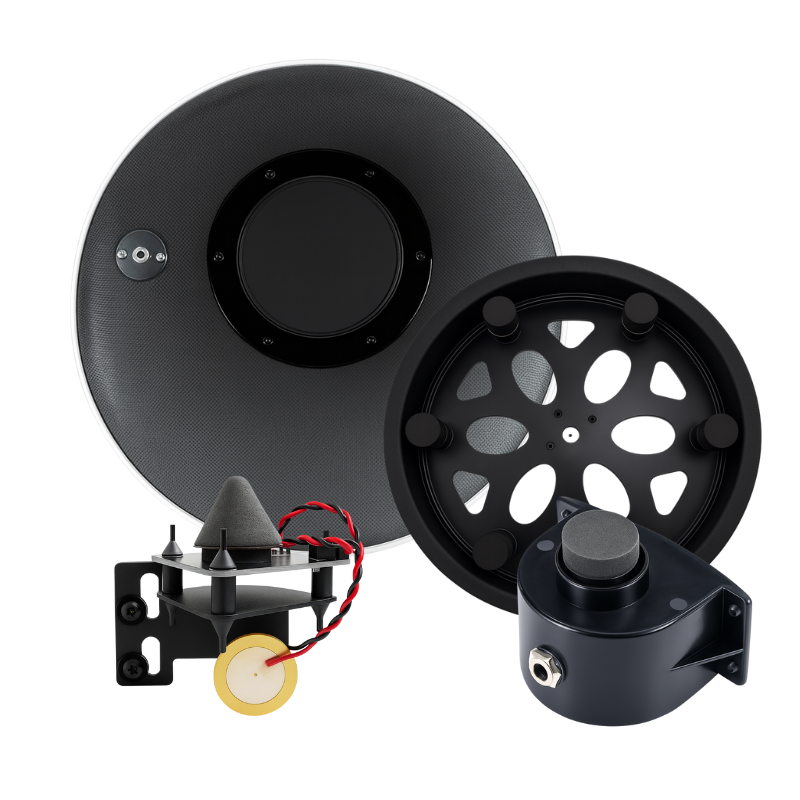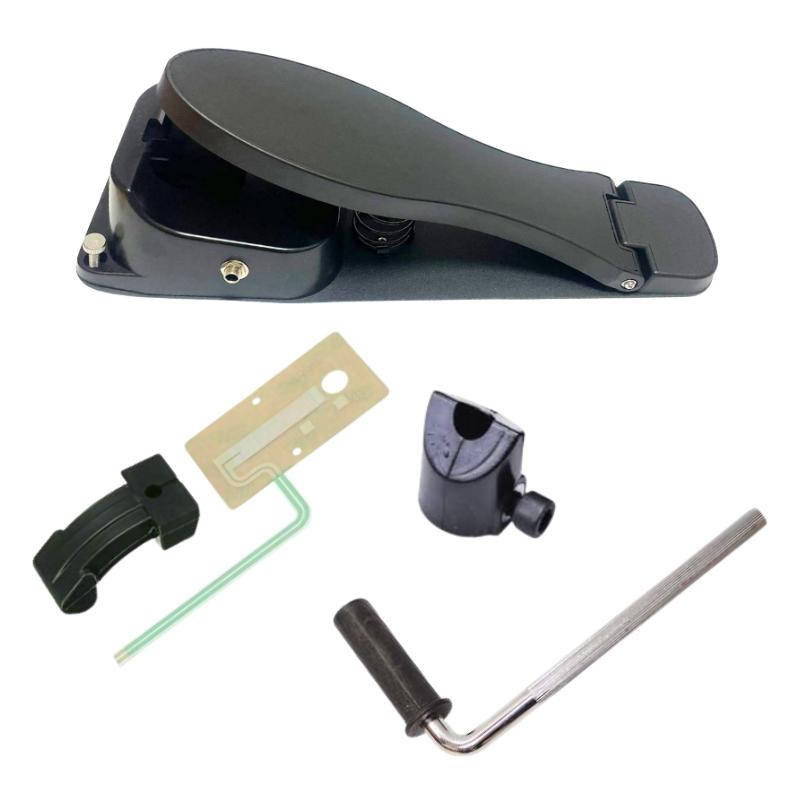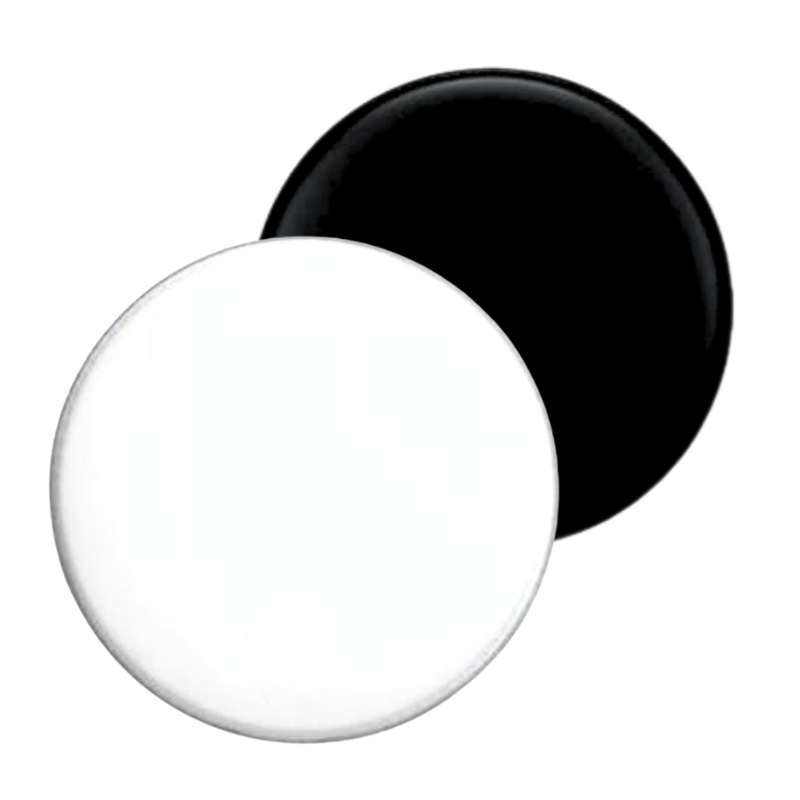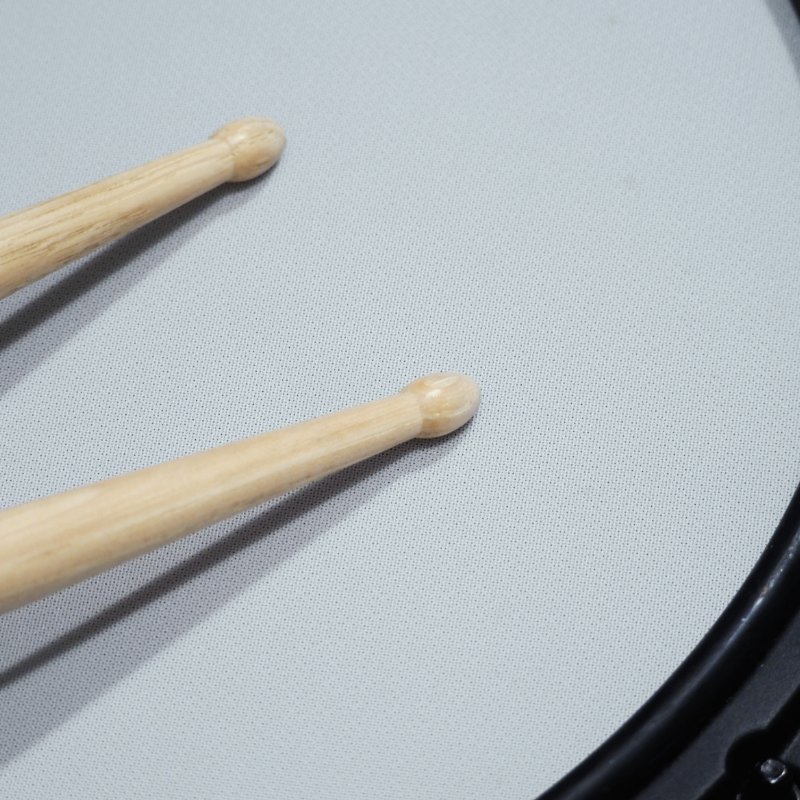
Drum Pad Mastery Course
Share
Course Objectives:
Develop hand technique, precision, timing, and speed
Explore odd time signatures (3/4, 5/4, 7/8) in pad practice
Learn how to translate pad work into musical application on the drum kit
Build a strong foundation for groove, fills, solos, and dynamics
MODULE 1: STICK CONTROL & BASIC RUDIMENTS
1. Single Stroke Roll
Sticking: R L R L R L R L
Time Signatures: 4/4, 3/4, 5/4
Purpose: Builds evenness, speed, and endurance. Fundamental for all drumming.
On Kit:
Use in fast hi-hat grooves
Turn into 16th note fills around the toms
Practice with accents to simulate musical phrasing
2. Double Stroke Roll
Sticking: R R L L R R L L
Time Signatures: 4/4, 6/8
Purpose: Teaches rebound control and finger technique
On Kit:
Smooth rolls on snare or cymbals
Add doubles into fills for flowing phrasing
Orchestrate across drums for dynamic movement
3. Paradiddle
Sticking: R L R R L R L L
Time Signatures: 4/4, 3/4, 7/8
Purpose: Builds alternating hand control with shifting accents
On Kit:
Turn into groove variations (e.g., ghost notes on snare)
Move R hand to cymbal for hybrid groove
Use as a fill base – move each stroke to a different surface
4. Flam
Sticking: grace note + main stroke (e.g., lR or rL)
Time Signatures: Universal
Purpose: Develops width, timing precision, and fullness of sound
On Kit:
Use in marching-style fills
Layered snare hits in grooves
Flam-based fills with dynamics (Flam accents / Flam taps)
5. Drag (Ruff)
Sticking: rrR or llL
Time Signatures: 4/4, 6/8, 5/8
Purpose: Finger control and grace note accuracy
On Kit:
Apply in ghost-note embellishments
Drag into tom hits or kick drum notes for texture
Great for jazz, Latin, and funk feel
MODULE 2: DYNAMIC CONTROL & MOTION
6. Accent-Tap Exercise
Sticking: R L R L... with accented strokes at set intervals
Purpose: Dynamic control, wrist vs. finger awareness
On Kit:
Translate into backbeat accents
Use to build ghost-note vs accented stroke contrast in grooves
7. Moeller Technique Practice
Motion: Downstroke → Tap → Upstroke
Purpose: Teaches energy-efficient stroke motion, essential for dynamics and speed
On Kit:
Build powerful backbeats (rock/pop)
Accent patterns on hi-hat or ride
Expressive fills using natural rebound
8. Subdivision Switching
Exercise: Practice quarter notes → eighths → triplets → 16ths
Purpose: Internalize rhythm grid and tempo mapping
Time Signatures: Try in 4/4, then 3/4 and 5/8
On Kit:
Use in solo building and groove variation
Helps with fill placement and rhythmic creativity
MODULE 3: TIMING & ODD TIME SIGNATURES
9. Odd Time Rudiment Loops
a. 3/4 Paradiddle
Play 3 paradiddles = 12 notes → fits one 3/4 bar (4 notes per beat)
Use accent shifts to explore groove ideas
b. 5/4 Single Stroke Roll
Count: 1-2-3-4-5 | R L R L R L R L R L
Add accents on the "1" to internalize bar start
c. 7/8 Double Strokes
Count: 1-2-3-4-5-6-7
Use groupings (e.g., 2+2+3) with double strokes to create patterns
On Kit Application:
Use rudiment patterns as fill skeletons
Helps build fluency in progressive rock, jazz fusion, cinematic styles
MODULE 4: PRACTICAL APPLICATION ON THE KIT
Turning Pad Practice into Drum Set Vocabulary
Orchestration – Move each hand to a different surface (snare, toms, cymbals)
Example: Play paradiddles with R on hi-hat, L on snare
Groove Integration – Combine pad rudiments into beats
Example: Use drag as ghost-note pickup into snare hit
Fill Building – Turn a pad exercise into a fill
Example: Flam accents moving across toms
Improvisation & Soloing – Freely combine learned rudiments
Use odd-time rudiments in creative phrasing
Accent placement and subdivision switching for solo shape
Genre Practice:
Jazz: Use brushes/pads for subtle dynamic control
Funk: Ghost note paradiddles
Metal: Fast single strokes, flams for intensity
Latin: Use drags and doubles for timbale-style rolls
BONUS: Practice Routine Template (Advanced)
30-Min Routine:
5 min: Singles (60–120 BPM, accent every 4th)
5 min: Doubles & Paradiddles (switch every 2 bars)
5 min: Flams & Drags (focus on spacing)
5 min: Moeller technique accents
5 min: Odd-time loop (e.g., 7/8 paradiddle fill)
5 min: Kit application (turn today’s rudiment into a fill or groove)


